
New Found Intercepts Nine New Gold Zones Spanning 3km in Strike, Doubles Known Vertical Extent of Gold Mineralization to 820m Depth at Queensway

New Found Gold Corp. (TSX-V: NFG) (NYSE-A: NFGC) is pleased to announce the first set of results from 11 diamond drill holes that were completed as part of a deep drilling program along the highly prospective Appleton Fault Zone on its 100% owned Queensway Project, located on the Trans-Canada Highway 15km west of Gander, Newfoundland. The Company commenced deep drilling at Queensway in March to test targets derived from the initial 3-D seismic interpretation and to date, a total of 14,940m have been completed in 15 drill holes ranging in length from 550m to 1,270m.
Initial Deep Program Highlights:
- Initial deep drilling confirms the presence of high-grade epizonal-style gold mineralization extending to 820m depth, doubling the vertical extent of the gold mineralized system at Queensway (Figures 2-4).
- Nine new deep gold zones were intersected in three holes. Six of the mineralized zones contained visible gold, with individual gold assay values as high as 42.0 g/t Au and 57.1 g/t Au (Figure 1). These zones occur on both the east and west sides of the AFZ and occur over a strike length of 3km (Figure 2-4). A detailed discussion of the mineralized intervals is provided in the Technical Discussion section below.
- Mineralization encountered at depth exhibits the same characteristics as the AFZ gold system at surface with broad quartz vein domains ranging in downhole length from 6m to 66m, visible gold mineralization, accessory minerals arsenopyrite, boulangerite, chalcopyrite, NH4 white mica alteration halos, and extensive deformation (Figures 9-12).
- The same lithological and structural framework has been confirmed to continue at depth and these initial deep test holes have provided an important preliminary dataset for interpreting the 3-D seismic data. This information is critical for refining existing geological models, further enhancing deep targeting capabilities.
- The directional drilling program utilizing Devico AS, a division of IMDEX, is now underway that will enable the use of branch holes to expedite follow-up on these deep discoveries. Assay results from 11 diamond drill holes have been received to date and the deep drilling program is ongoing.
Initial Deep Results Highlights:
| Hole No. | From (m) | To (m) | Interval (m) | Au (g/t) | Target Region |
| NFGC-24-2112 | 772.05 | 774.70 | 2.65 | 10.98 | Keats South Deep |
| Including | 772.75 | 773.25 | 0.50 | 57.12 | |
| And | 915.40 | 917.45 | 2.05 | 1.98 | |
| And | 919.25 | 923.95 | 4.70 | 2.17 | |
| And | 936.70 | 940.20 | 3.50 | 1.69 | |
| And | 1016.50 | 1019.20 | 2.70 | 7.66 | |
| Including | 1017.65 | 1018.30 | 0.65 | 28.48 | |
| NFGC-23-1304* | 768.40 | 770.55 | 2.15 | 3.27 | Iceberg-AFZ Deep |
| Including | 768.40 | 768.75 | 0.35 | 13.45 | |
| And | 829.85 | 832.00 | 2.15 | 12.01 | |
| Including | 829.85 | 830.45 | 0.60 | 41.97 | |
| And | 842.60 | 845.00 | 2.40 | 1.01 | |
| And | 960.30 | 962.65 | 2.35 | 1.16 | |
| NFGC-24-2094 | 594.20 | 601.20 | 7.00 | 1.50 | Deep Seismic Target |
Table 1: Deep Drilling Highlights
Note that the host structures are interpreted to be moderately to steeply dipping and true widths are unknown at this time. Infill veining in secondary structures with multiple orientations crosscutting the primary host structures are commonly observed in drill core which could result in additional uncertainty in true width. Composite intervals reported carry a minimum weighted average of 1 g/t Au diluted over a minimum core length of 2m with a maximum of 4m consecutive dilution when above 200m vertical depth and 2m consecutive dilution when below 200m vertical depth. Included high-grade intercepts are reported as any consecutive interval with grades greater than 10 g/t Au. Grades have not been capped in the averaging and intervals are reported as drill thickness. *Drill hole was extended.
Melissa Render, VP of Exploration of New Found, stated: “Initial deep drilling results has confirmed our overarching thesis that Queensway is a deep-rooted mineralized gold system with a broad footprint that extends to depth. With nine new zones intersected, we have plenty of targets for direct follow up. We are not only encouraged by the number of mineralized intersections, but also by the extent of the mineralization, with some zones spanning up to 66m in length. Each of these zones exhibit epizonal-style gold mineralization characteristic of the multitude of discoveries made along this segment of the AFZ. Visible gold occurs in six of the nine zones, at vertical depths ranging from 550m to 820m. These are the deepest gold intercepts identified to date and double the depth extent of the gold mineralized footprint.
“Initial deep targets were derived in part from the seismic data and from our existing geological model where drill holes were planned to test highly prospective domains of rock in locations where large gold-bearing structures are known to cross. These holes have added important geological knowledge at depth, information that will improve both our understanding of the seismic data and our geological model assisting with future deep targeting. These new discoveries, offer an excellent anchor point for testing with branch holes utilizing directional drilling to more efficiently test these new gold-bearing structures at depth. With an improved understanding of the seismic features and utilizing Devico AS’ directional drilling capabilities, New Found’s team is confident that it can refine its follow up drilling efforts to be faster, cheaper and more accurate at honing in on gold mineralization at depth.”
Technical Discussion
Below Keats (NFGC-24-2112):
- At the southern extent of the Keats Baseline Fault Zone, in the highly prospective region near the AFZ, two holes have been completed. NFGC-24-2112 intersected four distinct gold-bearing intervals throughout a total downhole length of 258m. These intervals range in vertical depth from 585-770m (Figures 2, 3, 5 and 6).
- Zone 1 observed visible gold in a quartz vein zone at 773m grading 11.0 g/t Au over 2.65m, including a high-grade assay of 57.1 g/t Au over 0.50m (Figure 1).
- Zone 2 consists of a broad interval of significant gold mineralized quartz veining spanning a downhole interval of 66m starting at 815m, characterized by massive stylolitic, brecciated and stockwork quartz vein phases with visible gold at 830.6m (Figure 1). This is accompanied by strong faulting and anomalous gold from 825-851m (Figure 9).
- Zone 3 is a wide domain of irregular gold mineralized stylolitic quartz veining and associated deformation reporting 1.98 g/t Au over 2.05m, 2.17 g/t Au over 4.70m and 1.69 g/t Au over 3.50m, extending 25m downhole from 915m (Figure 9).
- Zone 4 is a gold mineralized interval located on the west side of the AFZ characterized by massive stylolitic quartz veins (Figure 10) containing finely disseminated gold (Figure 1) with the most significant veining occurring over 15m downhole from 1,016m, grading 7.66 g/t Au over 2.70m, including a high-grade assay of 28.5 g/t Au over 0.65m.
Iceberg-AFZ (NFGC-23-1304):
- A further 1.2km to the northeast between the Iceberg segment of the KBFZ and the AFZ the extension of NFGC-23-1304 intercepted four individual zones of significant gold mineralization. These intervals range in vertical depth from 550-820m (Figures 2, 3, 5 and 7).
- Zone 1, starting 763m downhole, is characterized by a high density of gold mineralized quartz veins, some with widths of up to 1m, accompanied by increased deformation that extends a broad interval spanning 14m in length that is anomalous in gold throughout. This interval contained two visible gold occurrences and returned a significant interval of 3.27 g/t Au over 2.15m including a high-grade assay of 13.5 g/t Au over 0.35m (Figures 1 and 11).
- Zone 2, at 830m downhole, consists of a high-grade vein with coarse visible gold grading 12.0 g/t Au over 2.15m including 41.2 g/t Au over 0.60m (Figure 1).
- Zone 3 is a domain with an increase of massive stylolitic and brecciated quartz veins containing anomalous gold throughout and extending 6m in downhole length from 839m (Figure 11).
- Zone 4 is an interval consisting of high density stockwork and irregular quartz veins that are locally brecciated and contain anomalous gold, including one visible gold occurrence extending 13m downhole from 1,111m (Figure 11).
K2 Extension and AFZ-GSZ (NFGC-24-2094):
- At K2, a further 1.7km to the north, drill hole NFGC-24-2094 was designed to test both the deep extension of the K2 Main gold structure and a seismic target in a region where the Glenwood Shear Zone is interpreted to intersect the AFZ (Figures 2, 4, 5, and 8). This drillhole was successful in both extending the K2 structure to depth and identifying a new zone immediately west of the AFZ in close proximity to the GSZ.
- At a vertical depth of 296m, drilling encountered an increased percentage of mineralized stacked quartz veinlets transitioning to thicker and more massive stylolitic veins, typical of the K2 mineralization style. This interval of 13m starts at 334m downhole and grades 1.11 g/t Au over 2.30m, with anomalous gold throughout (Figure 12). This is interpreted to be the deep down-dip extension of the K2 Zone, extending it by 220m down-dip (Figure 8).
- The deep AFZ-GSZ intercept is located at the intersection of the AFZ-GSZ in the hanging wall to the AFZ and is comprised of a significant deformation zone with an abundance of quartz veinlets grading 1.50 g/t Au over 7.00m at a vertical depth of 555m. Mineralization in this area is akin to mineralization found at the Keats West Zone (Figure 12).
Drillhole Details
| Hole No. | From (m) | To (m) | Interval (m) | Au (g/t) | Zone |
| NFGC-24-2101A | No Significant Values | Keats South Deep Seismic Target | |||
| NFGC-24-21124 | 772.05 | 774.70 | 2.65 | 10.98 | Keats South Deep |
| Including | 772.75 | 773.25 | 0.50 | 57.12 | |
| And4 | 915.40 | 917.45 | 2.05 | 1.98 | |
| And4 | 919.25 | 923.95 | 4.70 | 2.17 | |
| And4 | 936.70 | 940.20 | 3.50 | 1.69 | |
| And4 | 1016.50 | 1019.20 | 2.70 | 7.66 | |
| Including | 1017.65 | 1018.30 | 0.65 | 28.48 | |
| NFGC-24-2103B1 | 7.00 | 22.45 | 15.45 | 3.34 | Keats West |
| Including1 | 11.00 | 12.00 | 1.00 | 13.67 | |
| Including1 | 15.45 | 16.20 | 0.75 | 14.98 | |
| And1 | 44.00 | 59.35 | 15.35 | 3.71 | |
| And | No Significant Values | Keats West Deep | |||
| NFGC-24-2103A1** | 6.25 | 13.45 | 7.20 | 2.40 | Keats West |
| And1 | 27.35 | 32.40 | 5.05 | 1.82 | |
| And1 | 44.25 | 58.10 | 13.85 | 2.85 | |
| NFGC-22-808* | No Significant Values | Iceberg-AFZ Deep | |||
| NFGC-23-1304*4 | 768.40 | 770.55 | 2.15 | 3.27 | Iceberg-AFZ Deep |
| Including | 768.40 | 768.75 | 0.35 | 13.45 | |
| And4 | 829.85 | 832.00 | 2.15 | 12.01 | |
| Including | 829.85 | 830.45 | 0.60 | 41.97 | |
| And4 | 842.60 | 845.00 | 2.40 | 1.01 | |
| And4 | 960.30 | 962.65 | 2.35 | 1.16 | |
| NFGC-24-2080 | No Significant Values | Iceberg Deep Seismic Target | |||
| NFGC-24-2093A | No Significant Values | Iceberg Deep Seismic Target | |||
| NFGC-24-2090A | No Significant Values | Lotto Deep Seismic Target | |||
| NFGC-24-2083 | No Significant Values | ||||
| NFGC-24-2092 | No Significant Values | Deep Seismic Target | |||
| NFGC-24-20944 | 19.85 | 22.35 | 2.50 | 1.15 | Monte Carlo |
| And4 | 254.10 | 256.45 | 2.35 | 2.17 | Unknown |
| And1 | 336.20 | 338.50 | 2.30 | 1.11 | K2 Deep |
| And4 | 594.20 | 601.20 | 7.00 | 1.50 | Deep Seismic Target |
Table 2: Summary of composite results reported in this press release for all deep drillholes received to date
Note that the host structures are interpreted to be moderately to steeply dipping and true widths are generally estimated to be 170% to 95%. 4True widths are unknown at this time. Infill veining in secondary structures with multiple orientations crosscutting the primary host structures are commonly observed in drill core which could result in additional uncertainty in true width. Composite intervals reported carry a minimum weighted average of 1 g/t Au diluted over a minimum core length of 2m with a maximum of 4m consecutive dilution when above 200m vertical depth and 2m consecutive dilution when below 200m vertical depth. Included high-grade intercepts are reported as any consecutive interval with grades greater than 10 g/t Au. Grades have not been capped in the averaging and intervals are reported as drill thickness. *Drill hole extended. **Failed hole.
| Hole No. | Azimuth (°) | Dip (°) | Length (m) | UTM E | UTM N | Prospect |
| NFGC-22-808 | 120 | -45 | 881 | 658058 | 5428076 | Keats West |
| NFGC-23-1304 | 300 | -45 | 1247 | 658432 | 5427632 | Iceberg |
| NFGC-24-2080 | 294 | -54 | 1022 | 658843 | 5427624 | Iceberg East |
| NFGC-24-2083 | 308 | -59 | 945 | 659509 | 5429493 | Jackpot |
| NFGC-24-2090A | 274 | -48 | 881 | 659370 | 5429020 | Lotto North |
| NFGC-24-2092 | 120 | -69 | 1121 | 657841 | 5428443 | Little Zone |
| NFGC-24-2093A | 299 | -61 | 986 | 659107 | 5427814 | Iceberg East |
| NFGC-24-2094 | 62 | -67 | 641 | 658671 | 5429398 | Monte Carlo |
| NFGC-24-2101A | 282 | -52.5 | 833 | 658075 | 5426899 | Keats South |
| NFGC-24-2103B | 335 | -59 | 563 | 658102 | 5427995 | Keats West |
| NFGC-24-2112 | 320 | -50 | 1157 | 657840 | 5426411 | Keats South |
Table 3: Details of drill holes reported in this press release
Queensway 650,000m Drill Program Update
The Company is currently undertaking a 650,000m drill program at Queensway and approximately 4,830m of core is currently pending assay results.
Sampling, Sub-sampling, and Laboratory
All drilling recovers HQ core. The drill core is split in half using a diamond saw or a hydraulic splitter for rare intersections with incompetent core.
A geologist examines the drill core and marks out the intervals to be sampled and the cutting line. Sample lengths are mostly 1.0 metre and adjusted to respect lithological and/or mineralogical contacts and isolate narrow (<1.0m) veins or other structures that may yield higher grades.
Technicians saw the core along the defined cutting line. One-half of the core is kept as a witness sample and the other half is submitted for analysis. Individual sample bags are sealed and placed into totes, which are then sealed and marked with the contents.
New Found has submitted samples for gold determination by fire assay to ALS Canada Ltd. (“ALS”) and by photon assay to MSALABS since June 2022. As of February 2024, gold analysis at ALS has been performed by photon assay. ALS and MSA operate under a commercial contract with New Found.
Drill core samples are shipped to ALS for sample preparation in Sudbury, Ontario, Thunder Bay, Ontario, or Moncton, New Brunswick. ALS is an ISO-17025 accredited laboratory for the fire assay and photon assay methods.
Drill core samples are also submitted to MSA in Val-d’Or, Quebec. MSA operates numerous laboratories worldwide and maintains ISO-17025 accreditation for many metal determination methods. MSA is an ISO-17025 accredited laboratory for the photon assay method.
At ALS for fire assay, the entire sample is crushed to approximately 70% passing 2mm. A 3,000-g split is pulverized. “Routine” samples do not have visible gold (VG) identified and are not within a mineralized zone. Routine samples are assayed for gold by 30-g fire assay with an inductively-couple plasma spectrometry (ICP) finish. If the initial 30-g fire assay gold result is over 1 g/t, the remainder of the 3,000-g split is screened at 106 microns for screened metallics assay. For the screened metallics assay, the entire coarse fraction (sized greater than 106 microns) is fire-assayed, and two splits of the fine fraction (sized less than 106 microns) are fire-assayed. The three assays are combined on a weight-averaged basis. Samples that have VG identified or fall within a mineralized interval are automatically submitted for screened metallic assay for gold.
Samples submitted to ALS beginning in February 2024, received gold analysis by photon assay whereby the entire sample is crushed to approximately 70% passing 2 mm mesh. The sample is then riffle split and transferred into jars. For “routine” samples that do not have VG identified and are not within a mineralized zone, one (300-500g) jar is analyzed by photon assay. If the jar assays greater than 0.8 g/t, the remaining crushed material is weighed into multiple jars and submitted for photon assay.
For samples that have VG identified, the entire crushed sample is riffle split and weighed into multiple jars that are submitted for photon assay. The assays from all jars are combined on a weight-averaged basis.
At MSA, the entire sample is crushed to approximately 70% passing 2mm. For “routine” samples that do not have VG identified and are not within a mineralized zone, the samples are riffle split to fill one 450g jar for photon assay. If the jar assays greater than 0.8 g/t, the remaining crushed material is weighed into multiple jars and submitted for photon assay.
For samples that have VG identified, the entire crushed sample is weighed into multiple jars and submitted for photon assay. The assays from all jars are combined on a weight-averaged basis.
All samples prepared at ALS or MSA are also analyzed for a multi-element ICP package (ALS method code ME-ICP61) at ALS Vancouver.
Drill program design, Quality Assurance/Quality Control, and interpretation of results are performed by qualified persons employing a rigorous Quality Assurance/Quality Control program consistent with industry best practices. Standards and blanks account for a minimum of 10% of the samples in addition to the laboratory’s internal quality assurance programs.
Quality Control data are evaluated on receipt from the laboratories for failures. Appropriate action is taken if assay results for standards and blanks fall outside allowed tolerances. All results stated have passed New Found’s quality control protocols.
New Found’s quality control program also includes submission of the second half of the core for approximately 2% of the drilled intervals. In addition, approximately 1% of sample pulps for mineralized samples are submitted for re-analysis to a second ISO-accredited laboratory for check assays.
The Company does not recognize any factors of drilling, sampling, or recovery that could materially affect the accuracy or reliability of the assay data disclosed.
The assay data disclosed in this press release have been verified by the Company’s Qualified Person against the original assay certificates.
The Company notes that it has not completed any economic evaluations of its Queensway Project and that the Queensway Project does not have any resources or reserves.
Qualified Person
The scientific and technical information disclosed in this press release was reviewed and approved by Greg Matheson, P. Geo., Chief Operating Officer, and a Qualified Person as defined under National Instrument 43-101. Mr. Matheson consents to the publication of this press release dated July 11, 2024, by New Found. Mr. Matheson certifies that this press release fairly and accurately represents the scientific and technical information that forms the basis for this press release.
About New Found Gold Corp.
New Found holds a 100% interest in the Queensway Project, located 15km west of Gander, Newfoundland and Labrador, and just 18km from Gander International Airport. The project is intersected by the Trans-Canada Highway and has logging roads crosscutting the project, high voltage electric power lines running through the project area, and easy access to a highly skilled workforce. The Company is currently undertaking a 650,000m drill program at Queensway and is well funded for this program with cash and marketable securities of approximately $54 million as of July 2024.
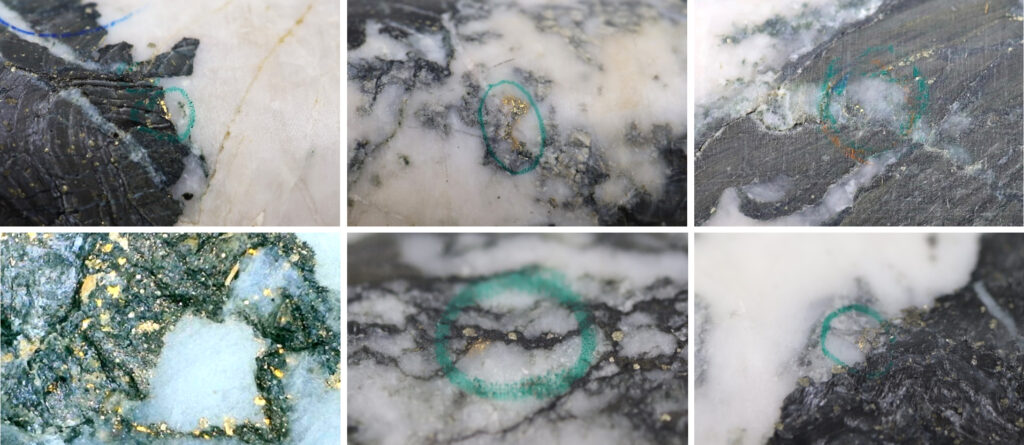
Figure 1: Photos of mineralization from Top: NFGC-23-1304 at ~769m, 830.6m and 1115.9m; Bottom: NFGC-24-2112 at 1016.9m, 830.6m and 773m . ^Note that these photos are not intended to be representative of gold mineralization in NFGC-23-1304 and NFGC-24-2112. (Photo: Business Wire)

Figure 2. 3-D vertical view (+/- 500m) of the approximately 6km north-south mineralized corridor along the Appleton Fault Zone at Queensway North with modelled zones and deep drillhole traces with results received (looking west) (Photo: Business Wire)

Figure 3. Keats and AFZ East long section (looking west) (Photo: Business Wire)

Figure 4. AFZ West long section (looking west) (Photo: Business Wire)
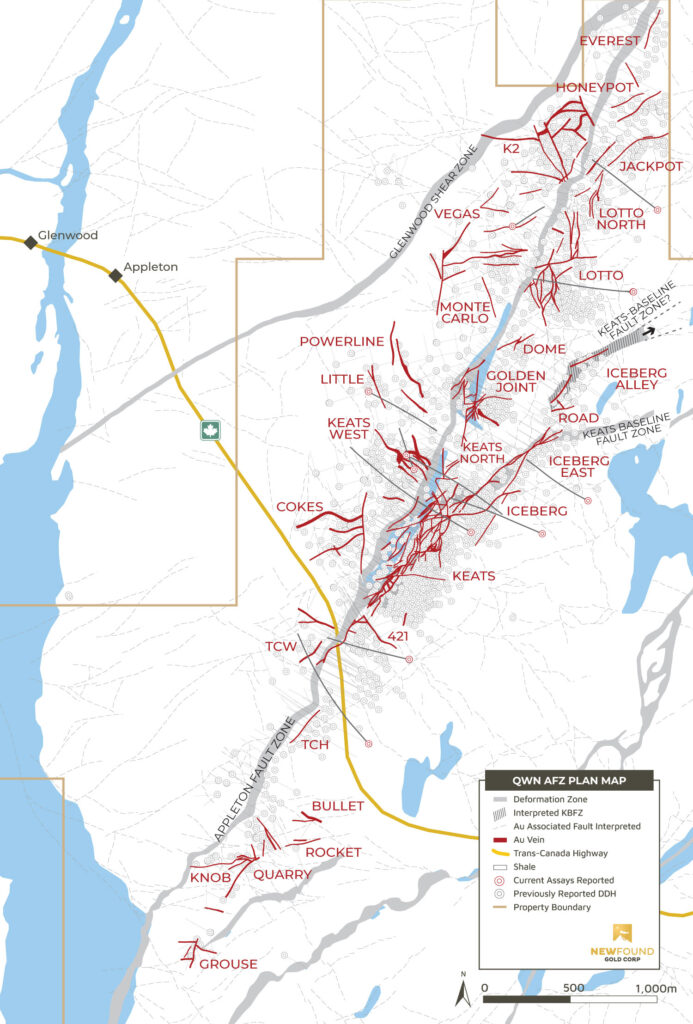
Figure 5. Grouse– Everest plan view map with locations of the deep drillholes reported in this press release (Photo: Business Wire)
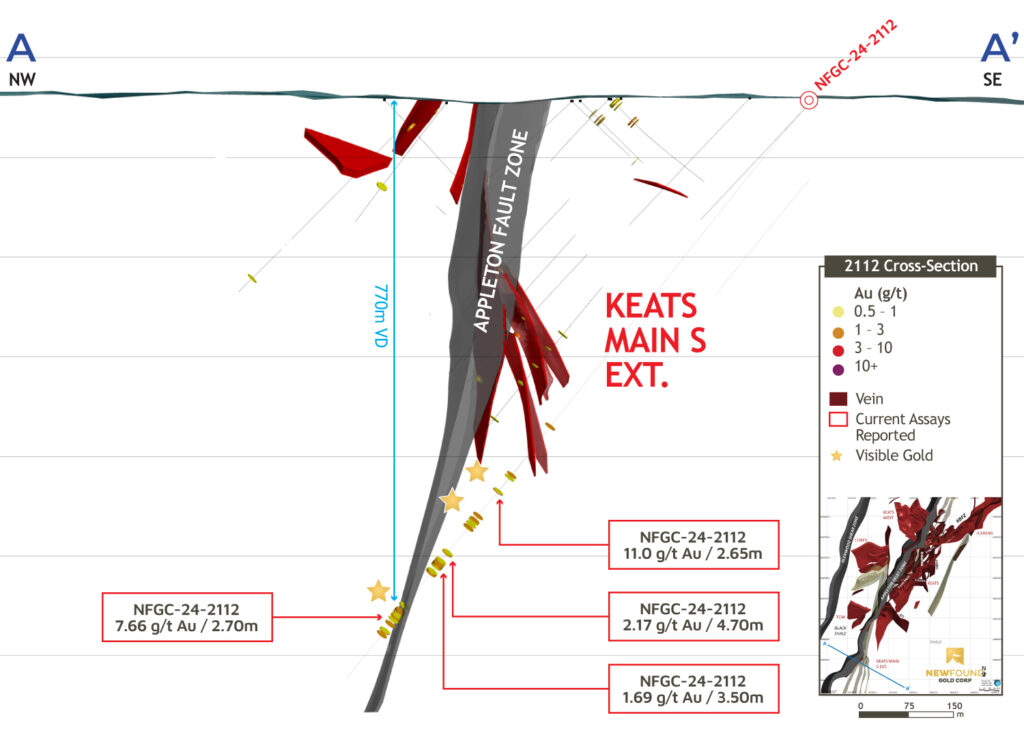
Figure 6. 3-D cross-section of NFGC-24-2112 (+/- 25m, looking northeast) (Photo: Business Wire)
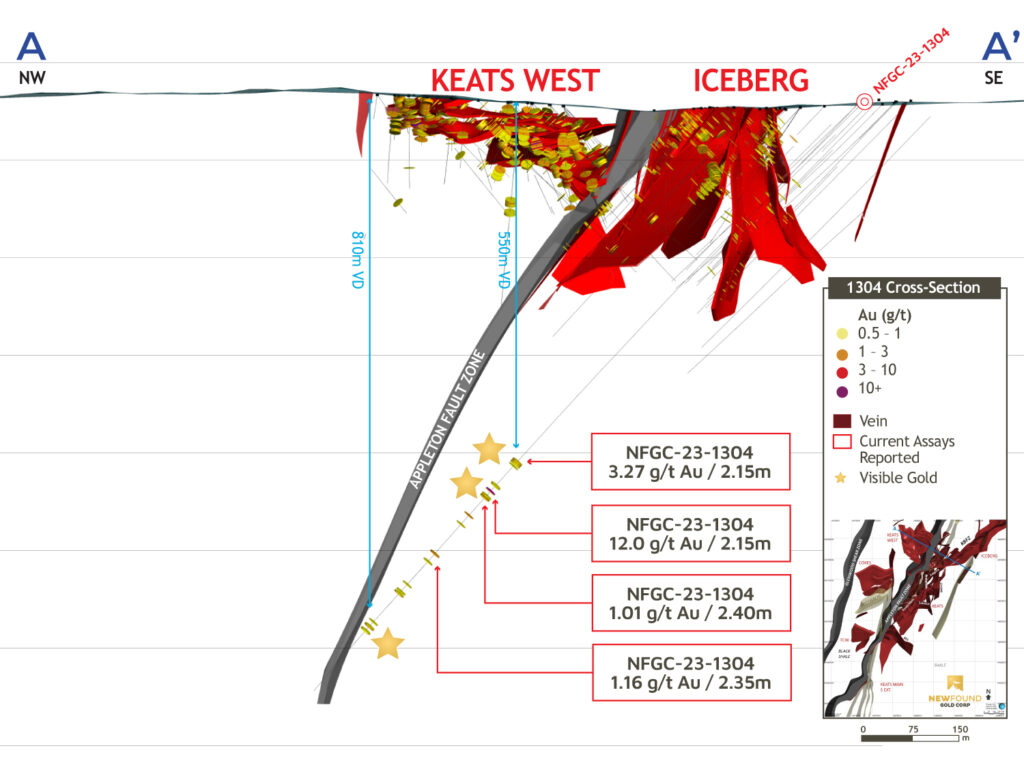
Figure 7. 3-D cross-section of NFGC-24-1304 (+/- 25m, looking northeast) (Photo: Business Wire)
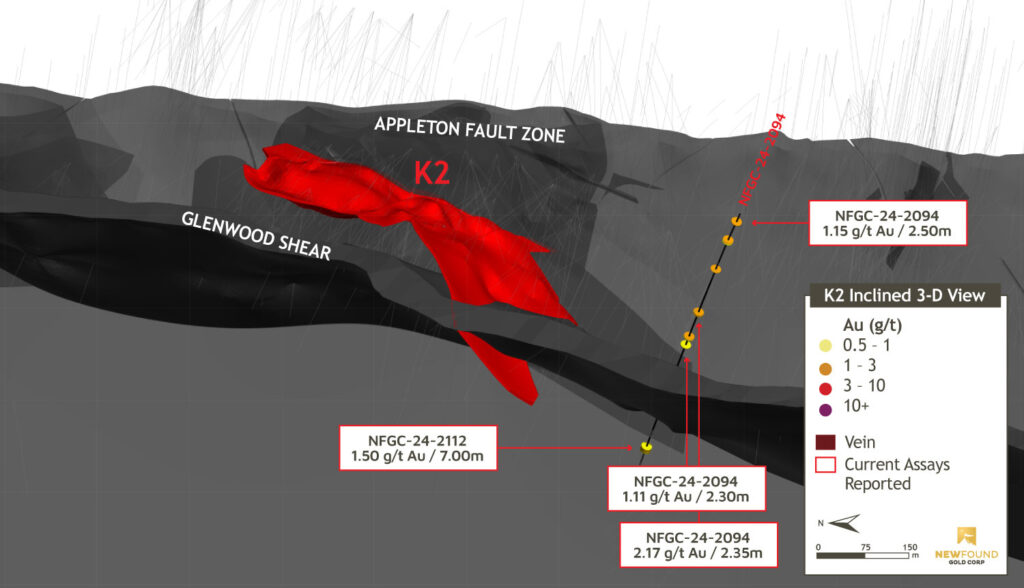
Figure 8. Inclined 3-D view of K2 with only the K2 Main structure visible and NFGC-24-2094 (Photo: Business Wire)
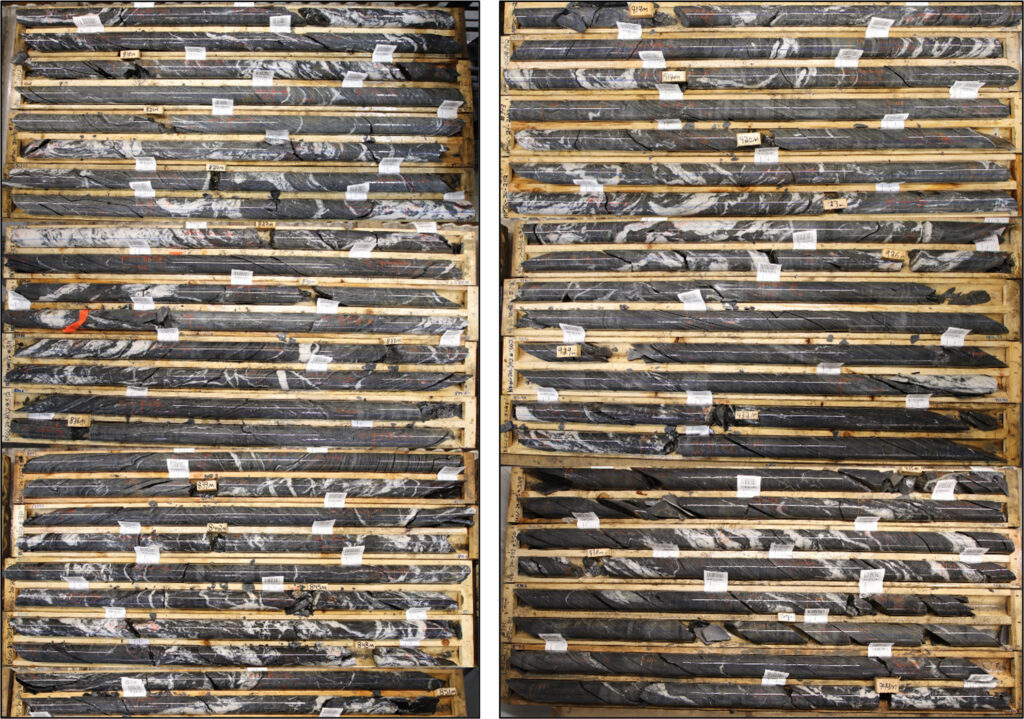
Figure 9: Core photos from NFGC-24-2112, Left: from 815-852m, Right: 914-944m (Photo: Business Wire)

Figure 10: Core photos from NFGC-24-2112 from 1016-1031m (Photo: Business Wire)
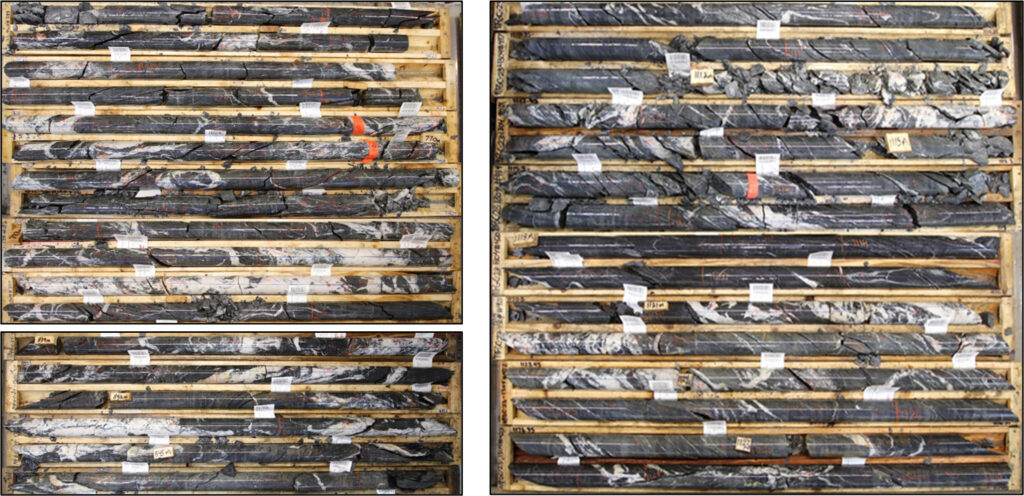
Figure 11: Core photos from NFGC-23-1304, Top Left: from 762-777.5m, Bottom Left: from 839-847m, Right: from 1,009-1,129m. (Photo: Business Wire)
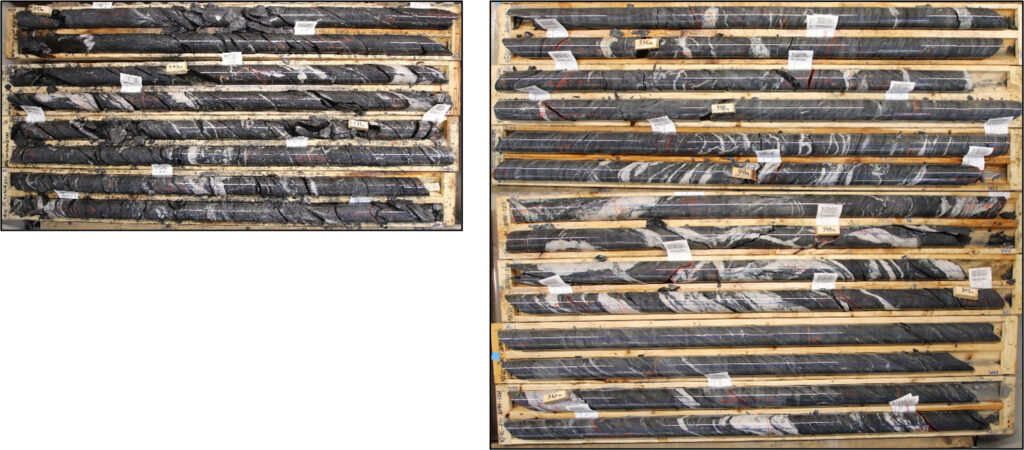
Figure 12: Core photos from NFGC-24-2094, Left: from 593-604m, Right: 333.5-347m. (Photo: Business Wire)
MORE or "UNCATEGORIZED"
Kuya Silver Confirms High-Grade Silver-Gold Vein Mineralization at Umm-Hadid with Initial Drill Results up to 1483.9 g/t AgEq over 2 Metres
Kuya Silver Corporation (CSE: KUYA) (OTCQB: KUYAF) (FSE: 6MR1) is... READ MORE
First Phosphate Closes Final Tranche of Oversubscribed Private Placement
First Phosphate Corp. (CSE: PHOS) (OTCQX: FRSPF) (FSE: KD0) is... READ MORE
GFG Receives Final Payment from the Sale of its Rattlesnake Hills Gold Project
GFG Resources Inc. (TSX-V: GFG) (OTCQB: GFGSF) announces that i... READ MORE
Goliath Receives $1,730,882 Through Warrant Exercises, Inclusive Of Crescat Capital A Longtime Strategic And Cornerstone Shareholder
Goliath Resources Limited (TSX-V: GOT) (OTCQB: GOTRF) (FSE: B4IF)... READ MORE
Robex Pours First Gold at Kiniéro on Schedule and Budget
Highlights: Gold bar weighing 2.64 kilograms (85 oz) poured in th... READ MORE












